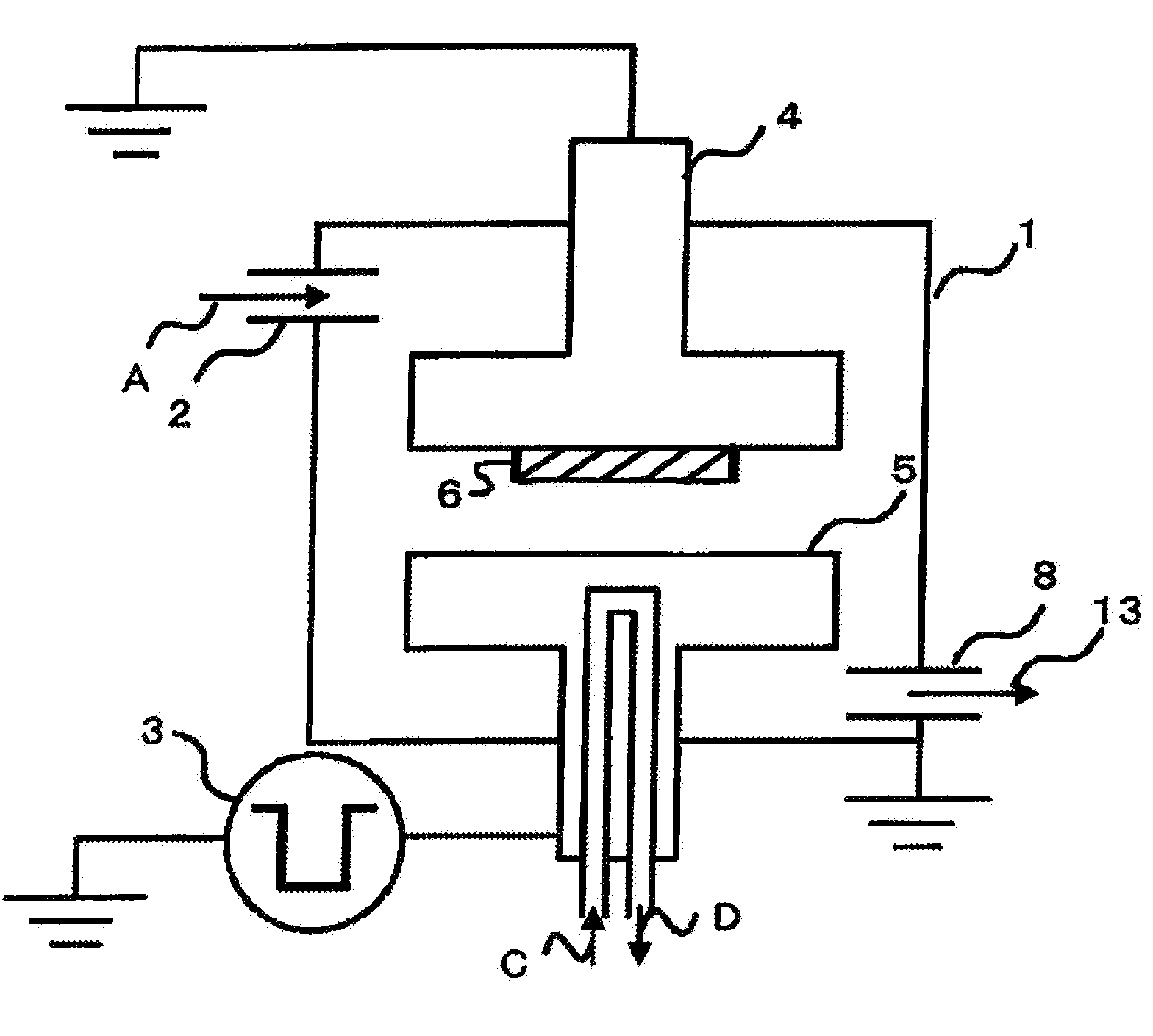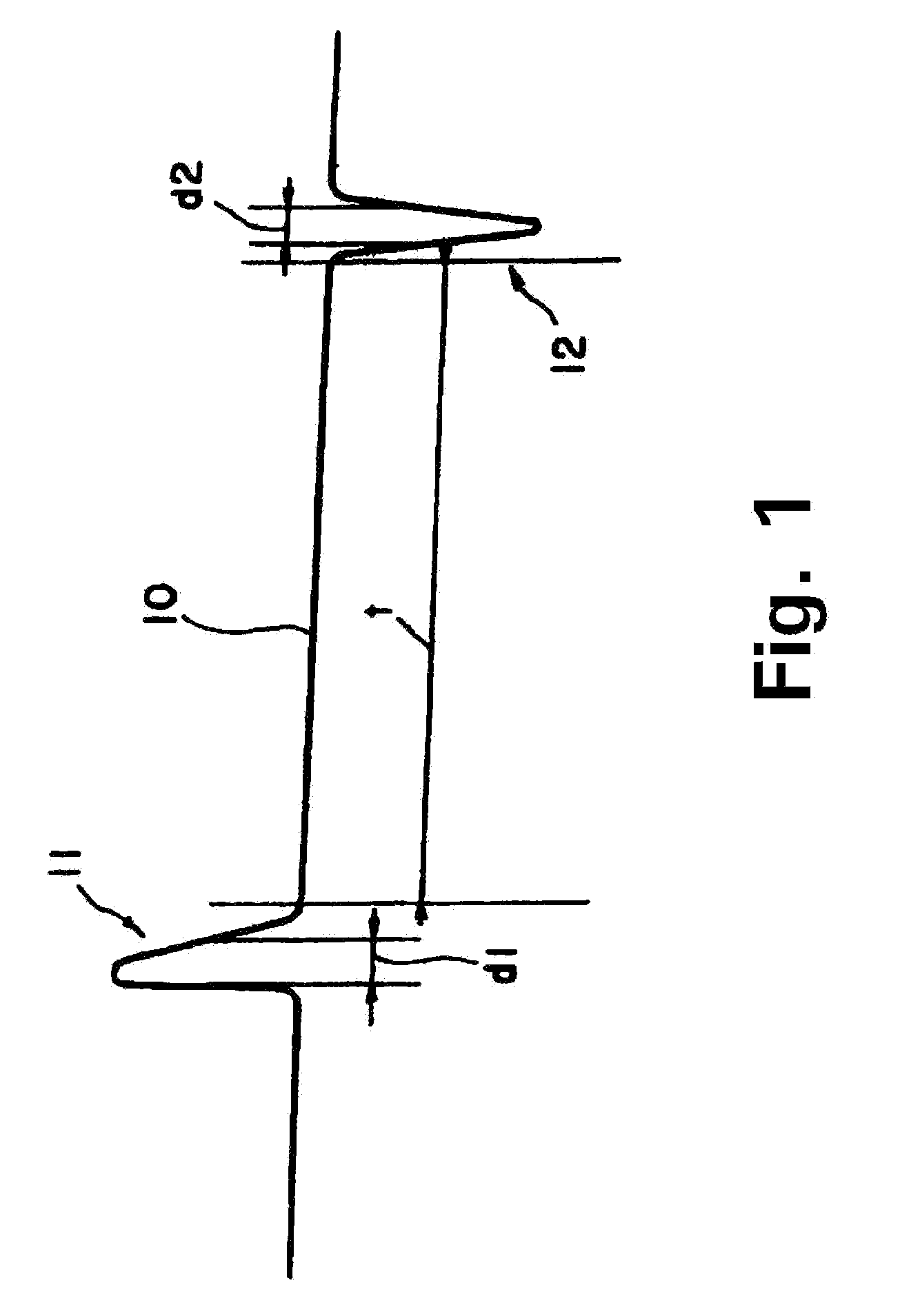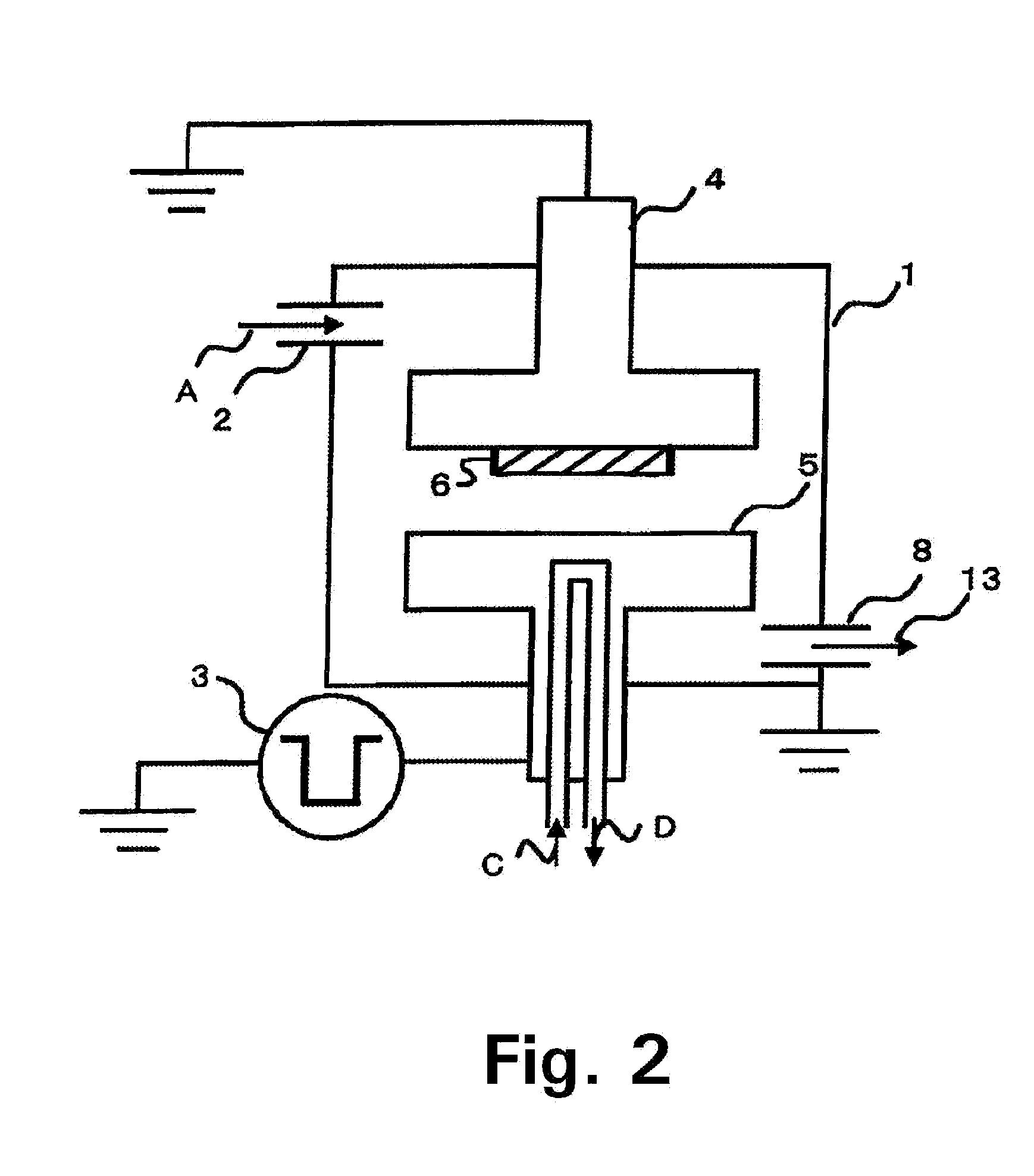Method for reforming carbonaceous materials
a carbonaceous material and carbonaceous technology, applied in vacuum evaporation coating, nuclear engineering, therapy, etc., can solve the problems of low melting point, low efficiency, and difficult purpose-based processing, and achieve the effect of small duty ratio, input energy and pulse width
- Summary
- Abstract
- Description
- Claims
- Application Information
AI Technical Summary
Benefits of technology
Problems solved by technology
Method used
Image
Examples
example 1
[0055]An amorphous carbon (diamond-like carbon: DLC) film 6 was set on an earth potential of a vacuum apparatus by the method described in reference to FIG. 2. The DLC film is composed of a material comprising 70% carbon and 30% hydrogen. Nitrogen gas was supplied into the vacuum apparatus and controlled to a pressure of 1 Pa. A DC pulse of −10 kV with pulse width 0.5 μsec and duty ratio 0.5 was applied to a cathode electrode 4 opposed to the earth potential, and the amorphous carbon film was irradiated with the electron beam for 2 hours with an input energy of 0.0013 J / cm2. A half of the carbon film as a sample was masked so as not to be irradiated with the electron beam, forming a non-irradiated surface as a comparative example. The remaining half of the carbon film was exposed and irradiated with the electron beam.
[0056]The surface roughness Ra of the film after the irradiation with electron beam was 0.1 to 1.0 nm both in the irradiated surface and in the non-irradiated surface w...
example 2
[0059]A photoresist mask 6 was treated by the method described in reference to FIG. 3. The photoresist (OFPR-800) used has a carbon content of about 50%. The carbon content of the photoresist corresponds to the value after baking. A silicon wafer 6 coated with the photoresist mask was set on an anode electrode 5 in the vacuum apparatus. A half of the photoresist of the wafer was masked with a slide glass to form an electron beam non-irradiated surface. The remaining half was taken as an irradiated surface. The chamber was used as a cathode electrode (earth potential). Argon gas was supplied into the vacuum chamber and controlled at a pressure of 2.0 Pa. A DC pulse voltage of +10.5 kV with pulse width 0.2 μsec (200 nsec) and duty ratio 0.04 was applied to the anode electrode, and the photoresist was irradiated with the electron beam for 10 minutes in a condition of input energy 0.00020 J / cm2.
[0060]The surface roughness Ra of the film before the irradiation with the electron beam was ...
PUM
| Property | Measurement | Unit |
|---|---|---|
| Fraction | aaaaa | aaaaa |
| Fraction | aaaaa | aaaaa |
| Time | aaaaa | aaaaa |
Abstract
Description
Claims
Application Information
 Login to View More
Login to View More - R&D
- Intellectual Property
- Life Sciences
- Materials
- Tech Scout
- Unparalleled Data Quality
- Higher Quality Content
- 60% Fewer Hallucinations
Browse by: Latest US Patents, China's latest patents, Technical Efficacy Thesaurus, Application Domain, Technology Topic, Popular Technical Reports.
© 2025 PatSnap. All rights reserved.Legal|Privacy policy|Modern Slavery Act Transparency Statement|Sitemap|About US| Contact US: help@patsnap.com



